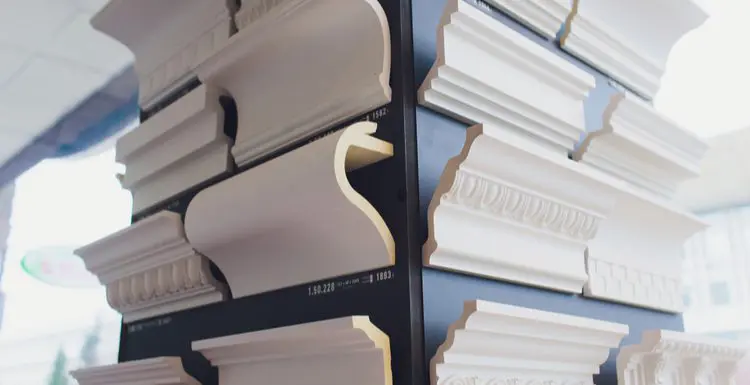When you’re remodeling, you might find yourself looking at a variety of crown molding styles.
Picking the right one will make or break the “wow” factor you want for your living spaces.
Read on to learn why.
What Is Crown Molding?
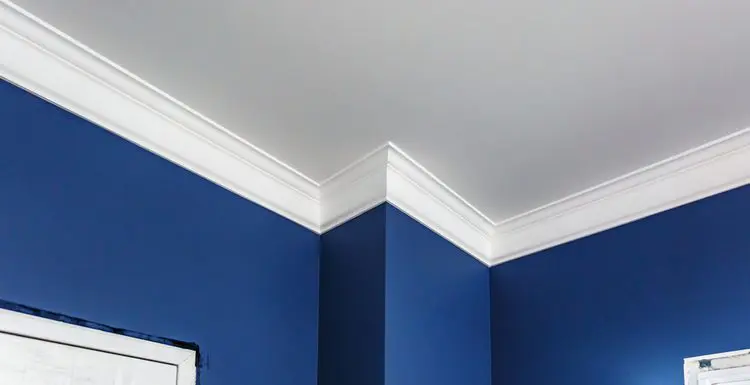
Jantsarik/Shutterstock
Crown moldings might seem like small details, but they are invaluable to elevating the look and increasing the value of a property.
Customized for your home, they can hide irregularities, cover cracks, and frame rooms to perfection!
Crown Molding Styles
Differentiating the types of crown molding styles helps simplify choosing the right one for customizing your home. We’ve rounded up the most popular options available below.
1. Crown
While the entire mold family often gets referred to as “crown,” there is an architectural style typically called crown.
Appropriately installed, crown molding uplifts spaces and makes the ceiling look higher. The molding draws the eye up and asks viewers to take in the details of the environment.
2. Baseboard
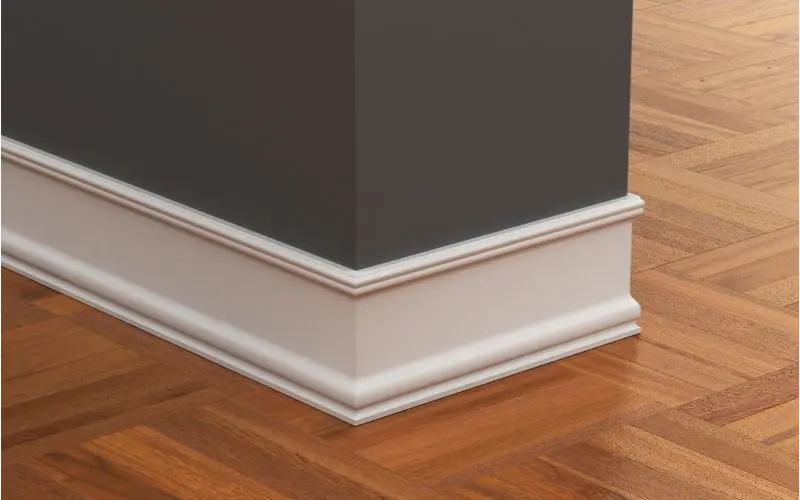
Li White/Shutterstock
Baseboard molding joins floors to walls for a seamless, gapless appearance.
The baseboard style is usually highlighted by a single piece of semi-circular trim.
Its design makes for a perfect opportunity to create a sophisticated and cohesive environment. Baseboards also protect drywall, as they keep away shoes, dirt, and other unwanted messes.
3. Casing
You use casing to camouflage unfinished gaps in your wall, doors, or window frames. The benefit makes casing an ornamental and functional solution.
You can choose from one of the many predesigns or create a custom one to match profiles in projects that involve unique or historic architecture.
The most popular casing profiles are Colonial, Stafford, Windsor, Belly, and Ranch. Subcategories include flute, reeded, stepped, symmetric, streamlined modern, and beaded.
With all these varying customizations, your contractor can offer a series of options that’ll fit any taste or budget.
4. Chair Rail
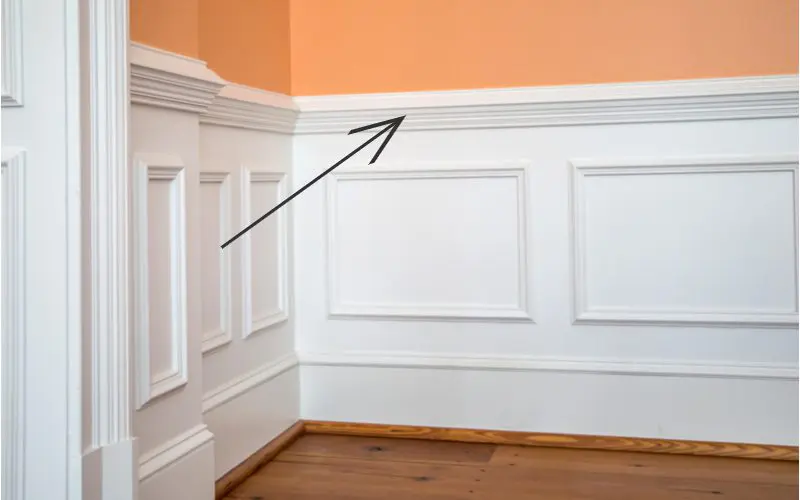
Ursula Page/Shutterstock
Chair rail mold engineering prevents potential damage to the wall by furnishings. It’s an application applied to breakfast nooks, dining rooms, foyers, and living rooms.
Unlike some moldings primarily used for floor and ceiling trim, a chair rail is often built into walls to enhance entire spaces.
A chair rail provides a sophisticated and classic look. Many consumers and professionals like the design as a backdrop for wall art or to bring particular furnishings to the forefront.
Chair rail molds are for use in columns and are applied to contrast panel molding. Chair rail molding can project minimalism, creating subtle detail and focus.
5. Cove
Cove mold is a no-frills, inexpensive option for redesigning spaces.
The concave-shaped trim is less ornate than other molds but serves its purpose of joining walls, floors, ceilings, treads, and risers. Older structures can expand and shift with time.
The result is blemishes, cracks, and gaps, especially in corners and where walls meet floors and ceilings.
Cove molds disguise those imperfections and enhance the overall visual appeal. The style’s a good choice for spaces that aren’t particularly modern.
6. Batten
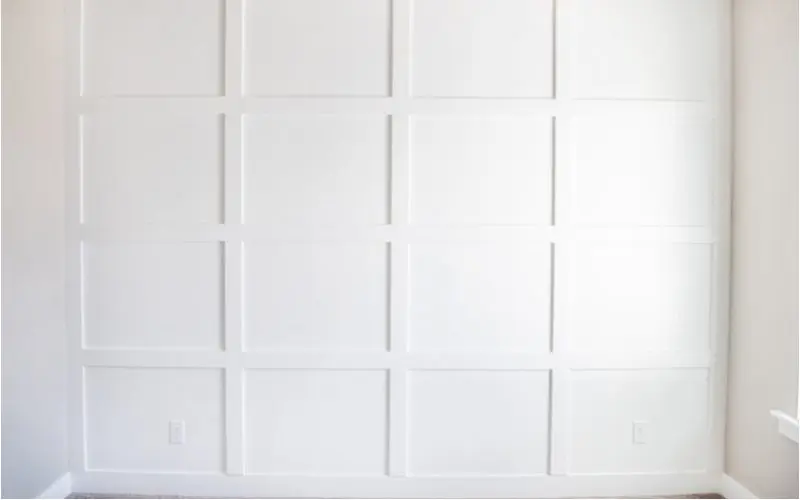
Megan Czarnocki/Shutterstock
Batten is trim applied to cover seams in siding or paneling. It’s a thin strip with a rectangular cross-section.
The installation is also applied to create a barrier from light glare with under-cabinet lighting fixtures.
Batten molding is an inexpensive way to trim and transform spaces. It’s become quite popular with the farmhouse and cottage decor crowd. The design adds character without looking overdone.
7. Picture Rail
Picture rail molding is a thin piece of horizontal molding. It rests up to 20 inches below the ceiling.
The rail provides architectural detail with a specific function: you hang your wall art from it. Plaster walls are perfect for picture rail molds.
You can hang artwork without damaging the wall or wall coverings. Picture rail molds offer creativity and freedom and are a nontraditional way to enhance your rooms.
The look is eccentric, intriguing, and unique. Installing a picture rail is a great solution if you regularly replace wall art to give your rooms a refreshed look.
8. Egg and Dart
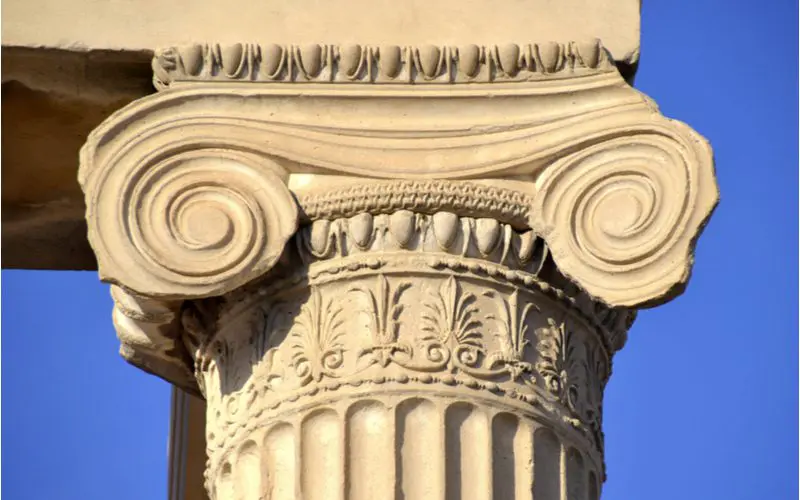
Petr F. Marek/Shutterstock
Many designs typically combine egg and dart molding with chair rails or crown molding.
Inspired by ancient Greek design, the mold features alternative V-darts with oval-shaped eggs, either split or whole. Its origins are in Neoclassical architecture.
Stately and regal, the repetitive pattern is a delicate and detailed embellishment. Once made from heavy stones, you can get the design in plaster, milled wood, foam, and polyurethane.
9. Dentil
Dentil molding uses evenly spaced, small block patterns to create an attractive ornamental architecture.
It’s usually incorporated into the crown molding and used to create a classic, historical look. The design is mostly associated with Greek, Roman, and Neoclassical structures.
As an addition to molding, dentil is more visual than functional. Rooms with this feature come across as elegant, lofty, and regal.
Dentils do not come in any other color but stone white, and they do not match existing mold colors.
10. Wainscoting
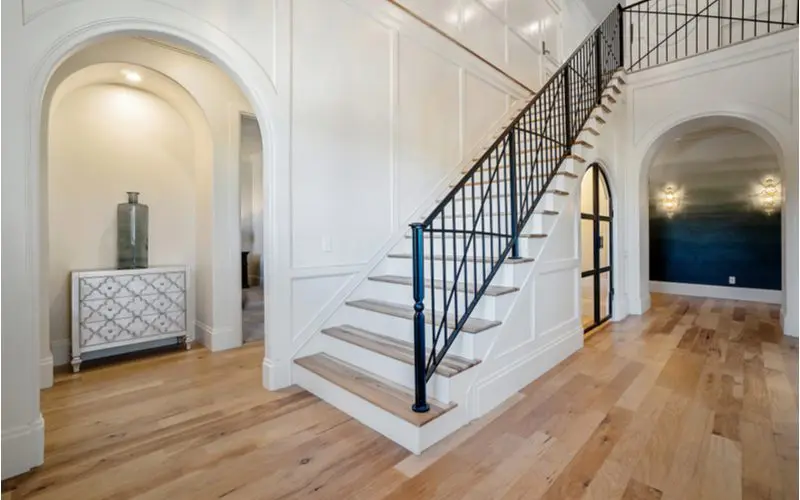
C Woods Photography/Shutterstock
Wainscoting is molding installed between a piece of furniture and a picture rail or baseboard. Wainscoting also splits walls, creating sections that present a unique design. It’s a functional and decorative implementation.
The installation can add a nice, rich texture to your spaces. The process also enhances a room’s structure and gives an easy line for the eye to follow.
Wainscoting is an excellent option for giving rooms with high ceilings a little warmth, too.
It can be hard to create a friendly, intimate ambiance in tall rooms, but wainscoting, which breaks up the walls, can produce a more comfortable feel, making a big room feel less cold and aloof.
11. Bead and Pearl
While two different types of molding, bead and pearl, are similar and often used in unison,. Both are decorative applications to your molds and trims.
Bead and pearl moldings consist of strings of small circular objects that you add to crown moldings.
The detail spices up your molding without taking away from the decor. It’s an ingenious, simple, and sophisticated way to accent your environment.
What Type of Crown Molding Is Best?

Ungvar/Shutterstock
The crown molding that’s best for you will depend on various factors. The best type of molding depends on your style, preferences, budget, the room you’re installing it in, and what will work in your home.
For example, if you want to put crown molding in your bathroom, the best type would be PVC. PVC is the best for bathrooms because it can tolerate moisture and won’t rot.
Flex is the best crown molding for curved walls because it’s more flexible than other types available. Medium-Density Fiberboard (MDF) is ideal for rooms with the trim painted because you can paint it to match the trim.
At the end of the day, the best type of crown molding depends on. For the most part, you can use most types in any room, but PVC, Flex, and MDF are best for specific situations.
What Is Crown vs. Cove Molding?
Crown and cove molding are both decorative trims you can use inside your home to enhance its appearance. They look pretty similar in many ways, but they have differences that can help you choose which one you should go with.
You can install crown molding where the wall and ceiling meet. It tends to be wider than cove molding and has an ornate profile.
Most people use crown molding to make a room more sophisticated. Manufacturers make crown molding from polyurethane, wood, plaster, and other materials.
Cove molding is installed in the same place where the wall and ceiling meet as crown molding. The difference is that this modeling has a concave profile, so it curves inward.
It tends to be narrower than crown molding and provides a more understated appearance. People use cove molding when they want a softer transition between the ceiling and the wall.
Things to Consider
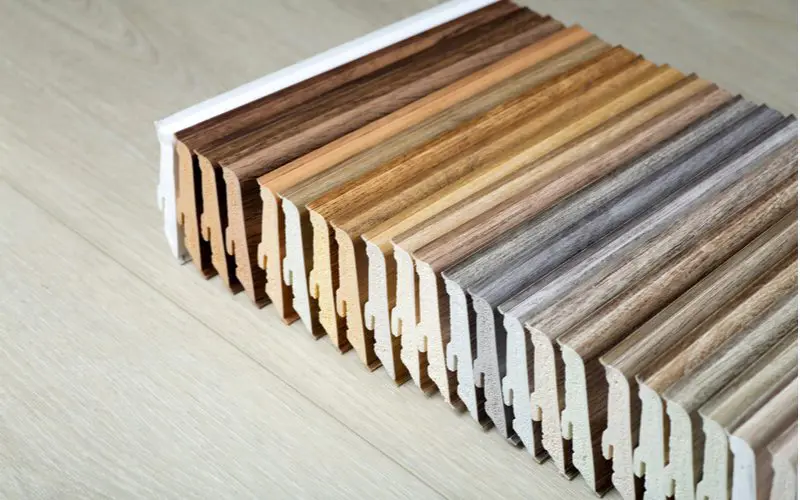
Vovidzha/Shutterstock
There are rules to molding that you’ll want to keep in mind when choosing the right style.
You Want the Parts to Represent the Whole
Crown molding styles should align with elements in the room without overshadowing them. Some ornate designs might look out of place in a conventional design. Try to utilize a molding installation that’s scalable for your spaces.
Always Adhere to Your Personal Style
Moldings help tell your story. They have personalities and a language that communicates your intent. Moldings are the pauses and breaks in the overall design of a room.
The installation reconfigures what would normally be plain, flat surfaces with possible defects.
Too Much Is Too Much
When it comes to crown molding, subtle is better. You can certainly take advantage of the cornering, bellies, angles, and other available touches.
But you run the risk of overpowering the aesthetic. Ultimately, your trim should be in the background, enhancing, not distracting from, the appearance of your spaces.
Get the Right Size
The size of the moldings usually comes down to the height of your ceiling. Recommendations are to use a size of no less than 2.5–6 inches tall with no picture mold for a space with an eight-foot ceiling. The size of the room can help determine the size of the moldings, too.
Take Care With Color Molding
Crown moldings are generally white to match most ceilings. The effect adds to the illusion of a larger room.
You’re under no obligation to adhere to this ideal. A molding that doesn’t match the ceiling color is capable of giving off a nice impression.
But if your ceilings and moldings don’t match, it can make a room seem smaller. Shades of white are the best way to create the look of a larger room.
DIY vs. Professional Project
Crown moldings need a deft touch. But it’s not a mind-numbing procedure that requires a lot of technical knowledge. You can buy a kit at most home improvement stores that simplifies the process.
Still, any crown molding project requires a significant amount of work, time, and attention to detail. Keep it simple, and you should have no issues.
But the more complex the installation, the better off you might be with a contractor who specializes in this arena.
A professional contractor will save you time and, yes, money. So, if you’re exploring detailed, ornate structuring that includes all the beads and whistles, consider a professional service.
You get guarantees of workmanship and peace of mind that the job is in good hands.
Final Word
Your crown molding styles come in a series of choices, and which molding you pick will have a dynamic impact on how you and others enjoy your spaces.
Shop carefully, have a professional ear close by, and whether you do it yourself or hire a contractor, make sure you know what’s what.
Finding and knowing the answer ensures your upgrades leave you with a stellar environment!
With unique crown molding, you’ll be able to refresh your home in no time.

